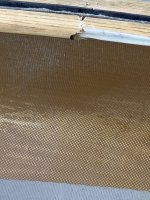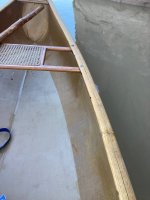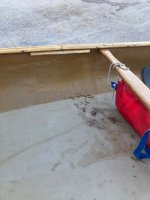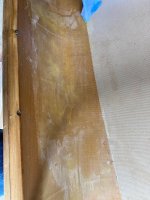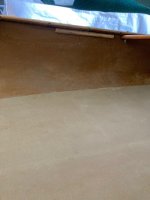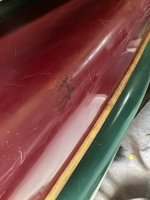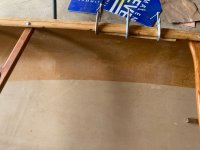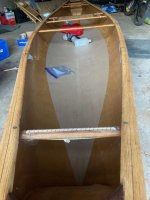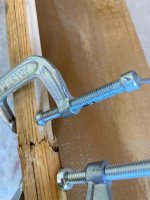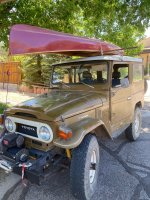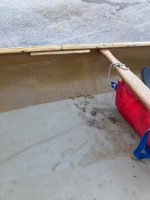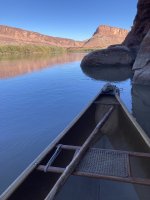I was looking at the long, relatively clean split on ALSG stripper’s inwale, and the equally straight forward rotted wood decay on your Wildfire, versus the variously directional splits and shattering on Halpc’s inwales and outwales.
While I agree that the simplest solution is often the best solution, those gunwale issues seem more complex to resolve satisfactorily epoxied and clamped in situ.
Never know ‘til you tried. And if failed, faced with removing the consequences. Folks who have tackled those kinds of gunwale splits and cracks, would you recommend epoxying the ‘wales left in place, or removing them before gluing back together?
Halpc, let us know how you decide to proceed, and when you do, photos please.
Pete, I concur that an interior S-glass patch will essentially disappear. Patching the gel coated outside with glass and epoxy, not so much.
I’d want some epoxy and glass over those visibly broken frayed strands. Even skipping that and just picking out the loose material and filling with gel coat, meh, other that white-on-white I haven’t seen many gel coat repairs that really matched worth a dang, and I’m colorblind.
No but I think that the OP is going to be stuck with an exterior patch of something and S 'glass will work admirably. Just removing the chipped and damaged gel coat is going to create a significant cosmetic defect no matter what else is done.

